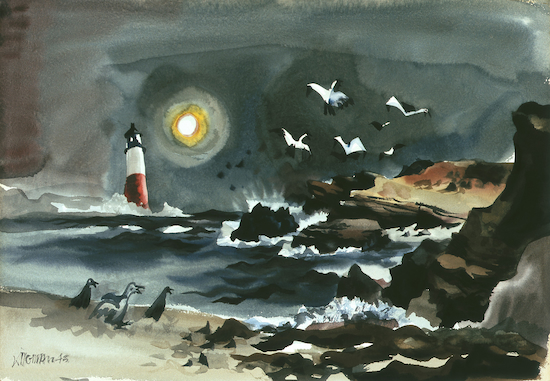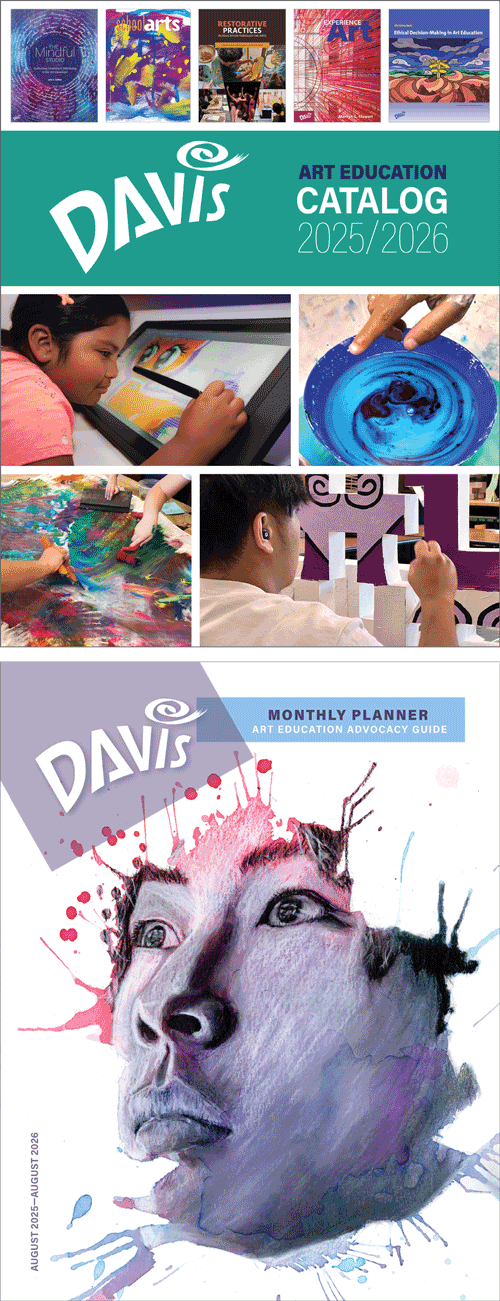National Lighthouse Day: Dong Kingman
It was on this day in 1789 that Congress established funding in support of building of lighthouses, beacons, buoys and public piers. On August 7 of 1989, National Lighthouse Day was established by Congress. Watercolor genius Dong Kingman presents a dark-value lighthouse scene painted in the dusk of World War II (1939-1945).
National Lighthouse Day, 7 August: art by Dong Kingman (1911–2000, United States)
Dong Kingman, an American artist born of Chinese parents in California, is considered one the first great American watercolorists of the 20th century.
 |
| Dong Kingman, Lighthouse, 1945. Watercolor on paper, 46 x 74 cm. The Butler Institute of American Art, Youngstown, Ohio. © 2025 Artist or Estate of Artist. (BIAA-372) |
Lighthouse has definite affinities to Chinese landscape. The loose brushwork, vigorously applied paint, and suggestive treatment of birds are reminiscent of the "flung ink" style of Chinese painting. The depiction of space and handling of light are influence of European watercolor. By the time of his death, Dong was considered one of the greatest American watercolorists. He was the first American to have a one person show in China.
The California Watercolor Movement, also known as California Scene Painting was born in Los Angeles in the 1920s. The California Watercolor Society provided a forum for artists to exhibit, and circulated these artists' works nationwide. During the Great Depression (1929–1940), realist Regionalism dominated American art. The watercolor medium gained momentum because of its affordability, portability and immediacy. Influenced by Regionalism, California watercolorists began depicting scenes specific to their areas. While California artists of the 1800s had depicted scenes of California in watercolor, those of the 1900s movement distinguished their work by the freedom of brushstroke and bold vibrant color.
Dong Kingman was born Dong Moy Shu in Oakland to parents of Chinese descent. He moved to Hong Kong at the age of five where he studied calligraphy and watercolor painting. His painting master had recently studied in Paris and introduced Dong to Impressionism and European styles of watercolor. Hearing that Dong aspired to be an artist, his teacher gave him the name King (scenery) Man (composition), which he adapted as his second name to his family name. Kingman acknowledged that this teacher, Szeto Wai (1913–1991), was his first and only influence.
Dong returned to Oakland at age 13 and enrolled at the Fox Morgan Art School. There he determined to concentrate on watercolors. At the time John Marin (1870–1953), Charles Burchfield (1893–1967) and Charles Demuth (1883–1935) were leading watercolorists. During the Depression he taught in the Works Progress Administration's art program where his interest in scene painting was cemented, and during which he mastered the watercolor medium. A one-person exhibit in San Francisco in 1936 was enthusiastically received and Dong's future success assured. Defining his personal style, Dong characterized his method as Asian when it came to trees and landscapes, but European when painting buildings.

Comments